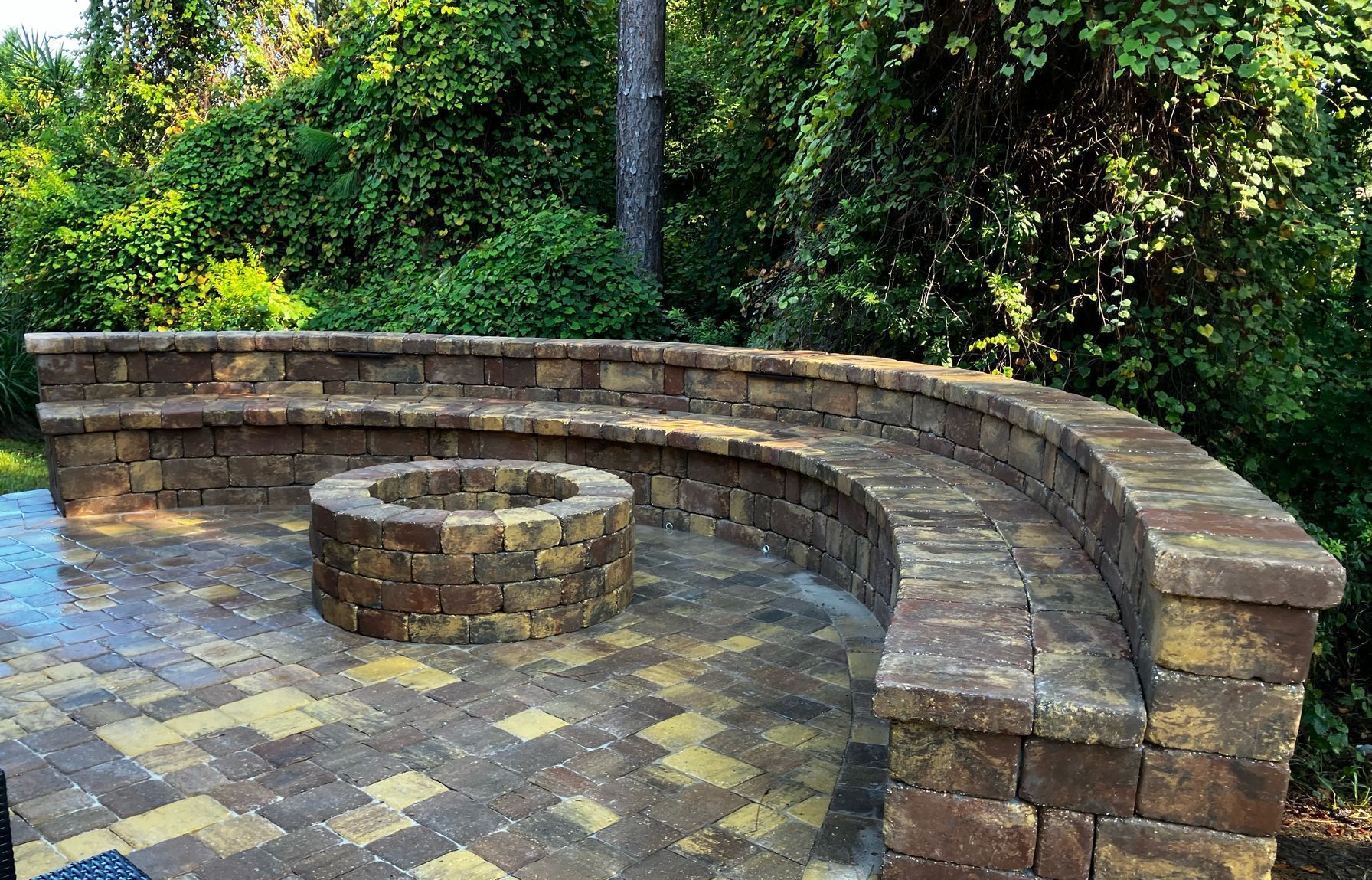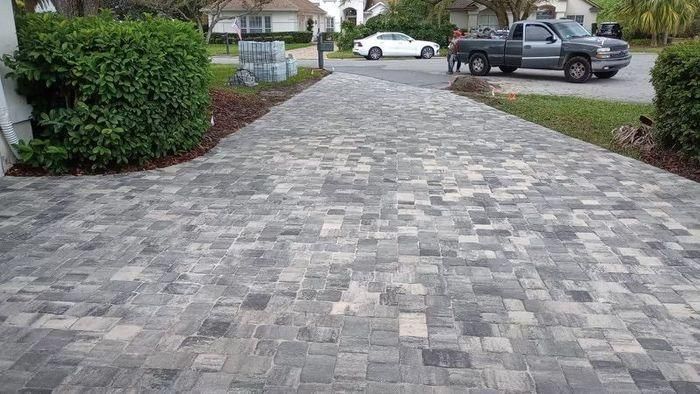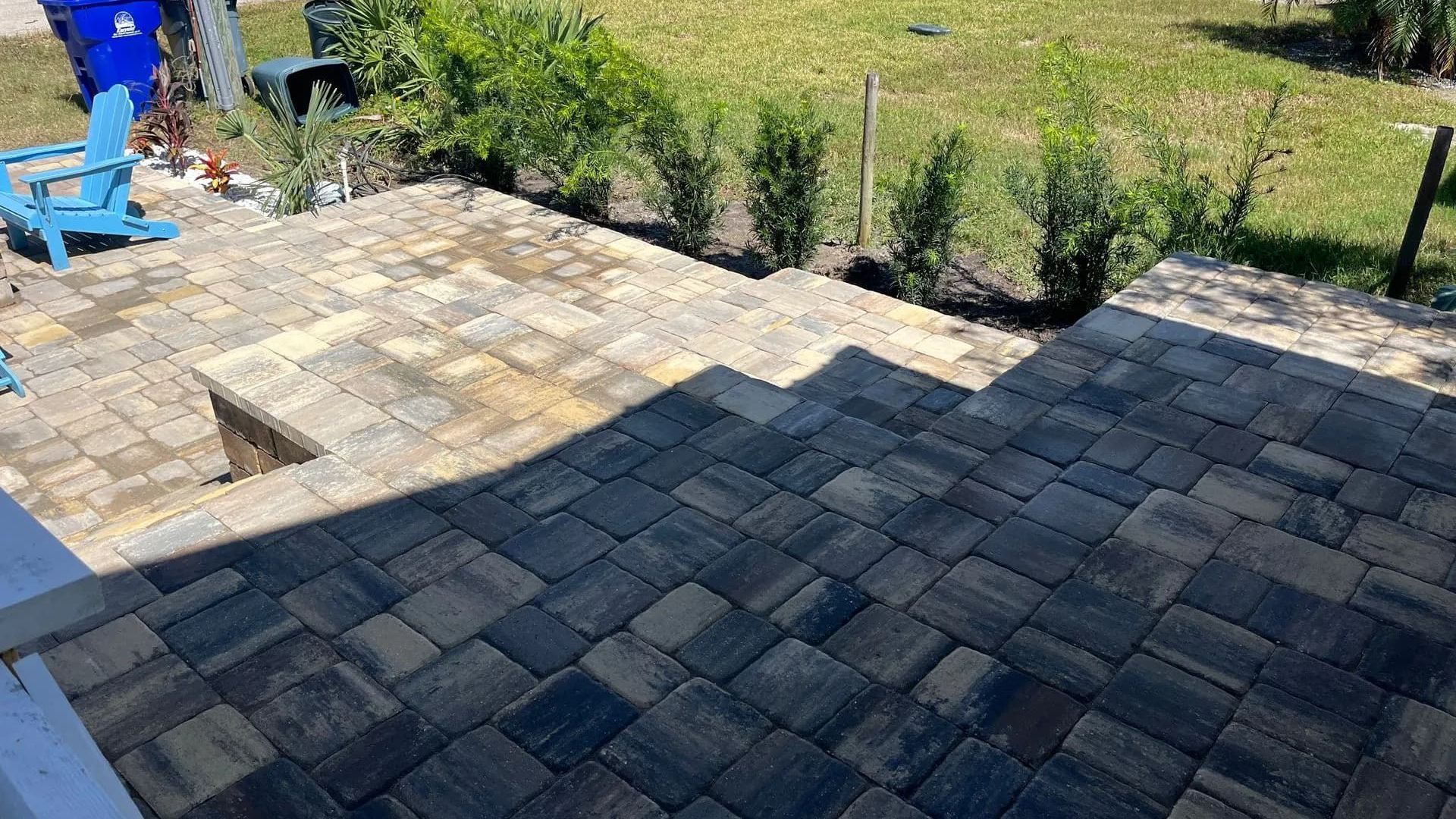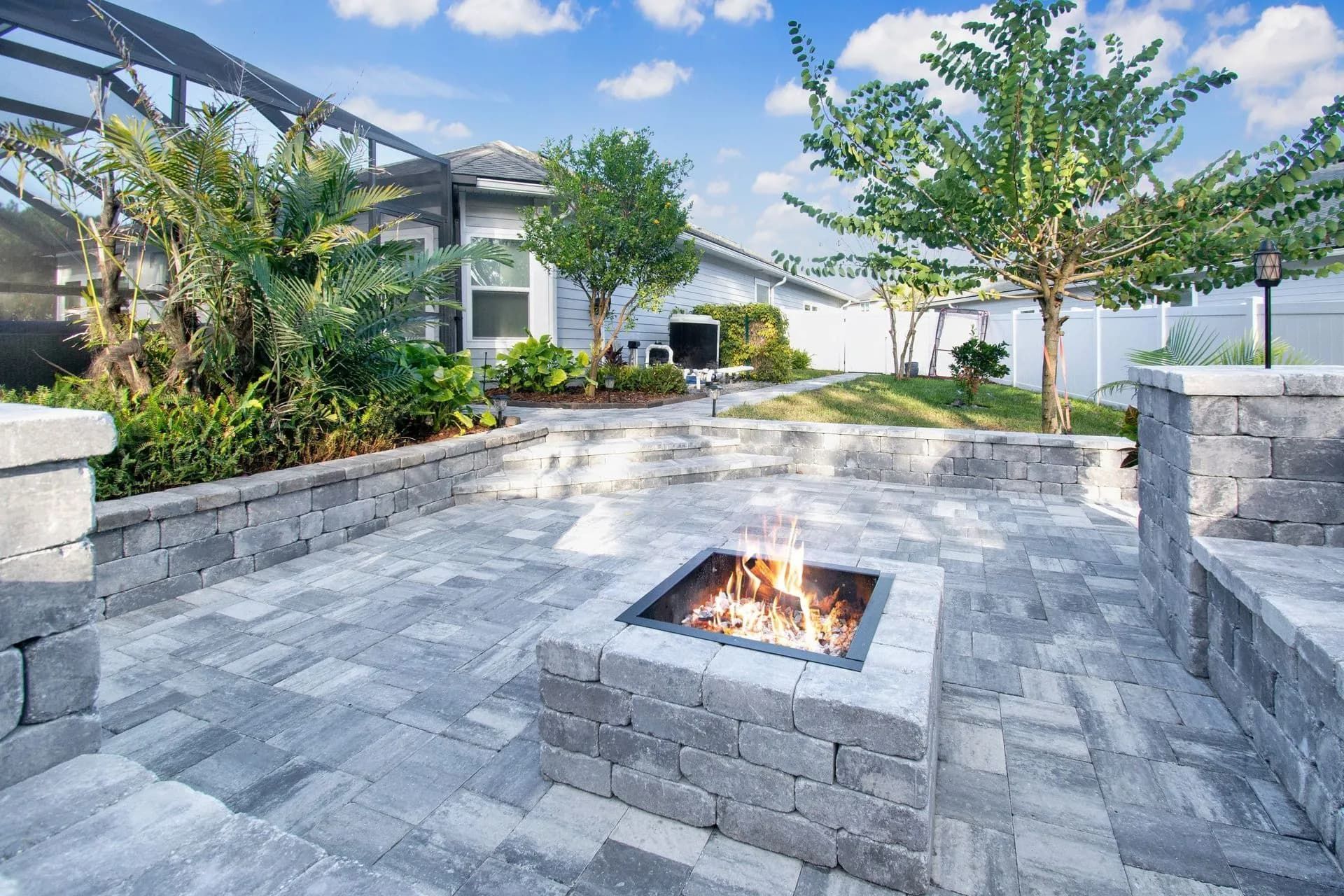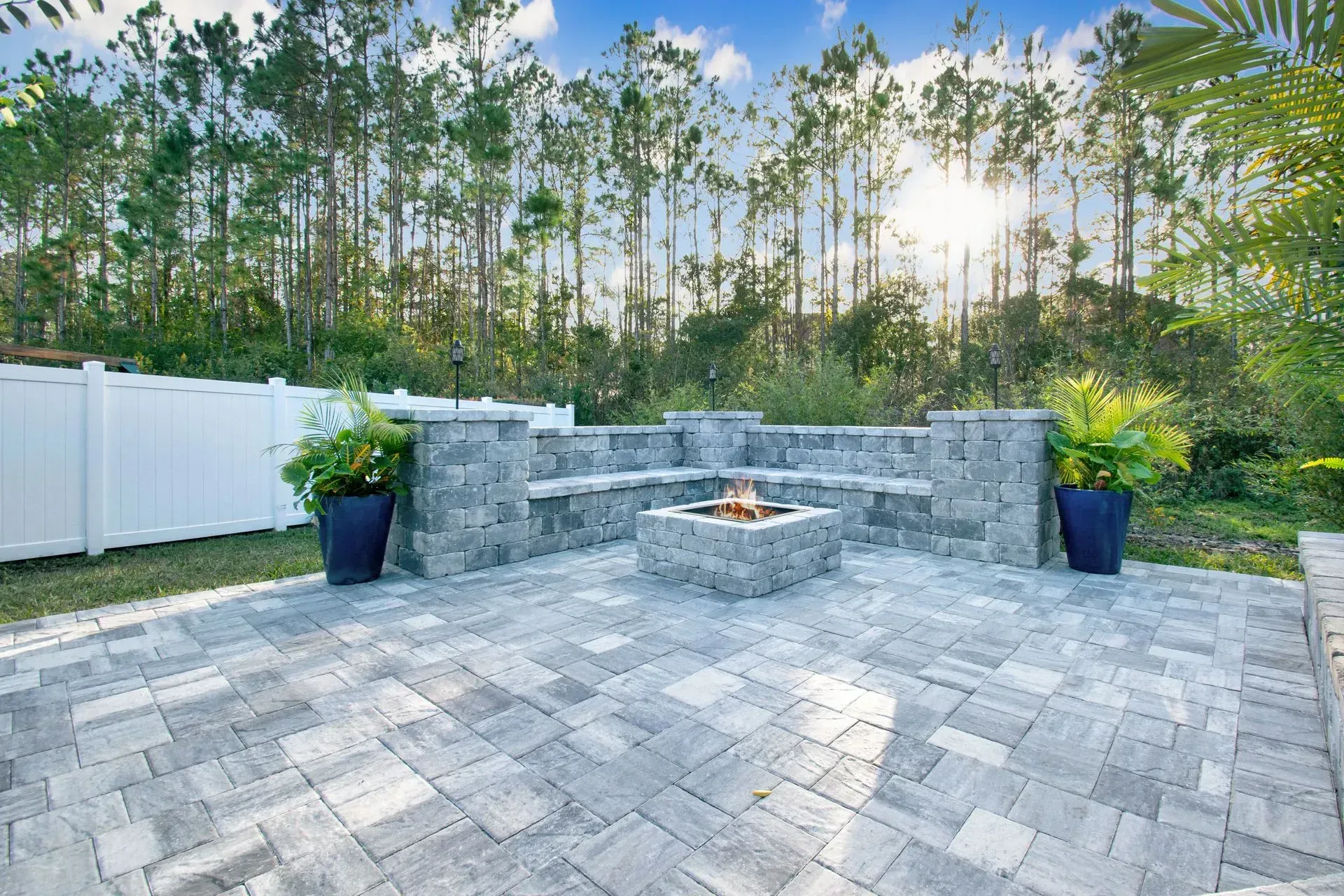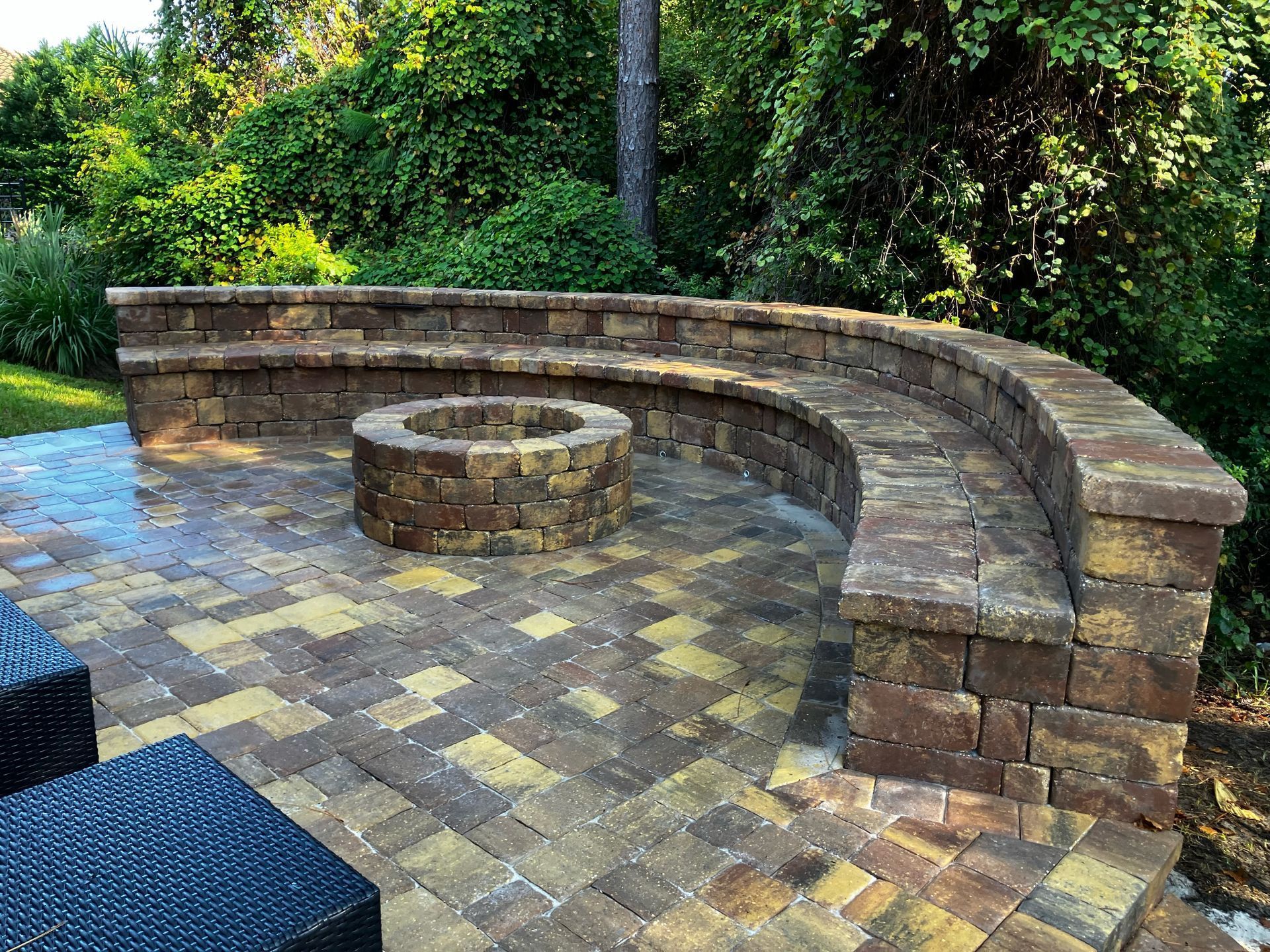Prevent Erosion with a Strong Paver Retaining Wall

Do you have spots in your yard where the dirt keeps sliding away? Maybe after it rains, you notice bare patches, puddles, or mulch that won’t stay put. That’s erosion—and if you don’t deal with it, it only gets worse.
One of the best ways to stop it is with a paver retaining wall. It holds the soil, controls water, and turns sloped ground into usable space. In this post, we’ll break down what erosion does, how a retaining wall helps, and why pavers are a smart, solid choice. We’ll also cover where to put one, how they’re built, and what happens if you wait too long to fix the problem.
What Is Erosion?
Erosion is when soil or dirt gets washed or blown away from where it’s supposed to be. It usually moves downhill, especially after heavy rain or when water flows too fast across your yard.
Most of the time, erosion is caused by water. That could be rain, water from your gutters, flooding, or even sprinkler systems that push water in the same spot again and again. Over time, that water wears down the soil and carries it away. Wind can also cause erosion, especially in dry or sandy areas.
You’ll know you’ve got erosion if you see:
- Bare soil where grass used to be
- Tree roots sticking out
- Dirt sliding down slopes
- Mulch or gravel always moving
- Water pooling in weird spots
Erosion can mess with your yard’s look, but it also leads to bigger problems—like drainage issues or shifting ground.
What Is a Retaining Wall?
A retaining wall is a solid wall that keeps soil from sliding down. It’s used in yards with slopes or uneven ground. The wall holds dirt in place and helps stop erosion. It also controls how water flows so it doesn’t wash things away.
Most retaining walls are made from concrete blocks, pavers, stone, or brick. They’re common in gardens, near patios, or along walkways. Retaining walls also make sloped areas flat, so you can use the space for planting or sitting. They’re built to keep your yard safe and steady.
How Retaining Walls Help Prevent Erosion
A retaining wall does more than just sit there looking nice. It’s like the muscle of your yard, quietly keeping everything in place.
Here’s how it helps:
- Keeps Dirt Where It Belongs: No more soil sliding down the hill every time it rains.
- Gives Water a Slower Path: Instead of water rushing through and tearing things up, the wall helps slow it down.
- Turns Slopes Into Usable Space: That steep hill? Now it’s a garden bed. Or a flat spot for chairs. Or both.
- Sends Water the Right Way: With the right setup, the wall helps guide water away from your home—not into it.
- Cuts Down on Mess: Less erosion means fewer puddles, less runoff, and no more mulch disappearing after a storm.
Why Pavers Are a Great Choice for Retaining Walls
Pavers are concrete blocks that fit tightly together. They’re made to handle heavy soil and water pressure, which makes them a solid choice for holding up sloped ground.
Here’s why they’re a good option:
- Strong and sturdy: Built to hold up under pressure and last for years
- Helps with drainage: Water can pass through instead of getting stuck behind the wall
- Easy to fix: If one cracks, just replace that block—no need to rebuild
- Clean look: Comes in different colors and styles to match your space
- Fits in with other features: Works great next to patios, steps, or walkways
- Paver retaining walls don’t just hold back soil—they’re easy to work with and make your yard look put together.
Where Should You Use a Retaining Wall?
- On hills or slopes to hold soil in place
- Around a raised garden or planting bed
- Along the edge of a driveway or sidewalk
- Behind a patio, deck, or pool area for support
- Near your home if water runs toward the foundation
- To create flat areas in a sloped yard
- Around walkways or steps to prevent soil from sliding
- Anywhere you want to stop erosion and control water flow
How a Strong Paver Retaining Wall Is Built
A retaining wall only works if it’s built the right way. Here’s how the job gets done, step by step:
Dig a Solid Base
It starts with a trench below ground, filled with compacted gravel. This base keeps the wall steady and stops it from sinking.
Set the First Row Level
The first row of pavers has to be level. If it’s off, the whole wall can lean or fall apart over time.
Stack the Pavers in Layers
Each row is stacked slightly tilted back into the hill. The pavers lock together to make the wall strong.
Add Drainage Behind the Wall
Gravel and a drain pipe go behind the wall. This lets water flow out instead of building pressure that could push the wall over.
Use Geogrid for Taller Walls
For walls over 3–4 feet, a mesh called geogrid gets added between layers. It holds the wall to the soil behind it, like a seatbelt.
Top It Off with Cap Blocks
The top row gets finished with smooth cap blocks. These make it look clean and help protect the wall.
That’s how a solid paver retaining wall is built—careful steps, done in the right order, to keep your yard safe and steady.
Important Tip: Don’t Forget About Drainage
Water causes most retaining walls to fail. If it builds up behind the wall, it creates pressure that pushes hard.
Without drainage:
- The wall can crack, lean, or fall
- The soil stays wet and loose
- The area becomes unsafe
Every wall needs drainage, even small ones. Gravel and a drain pipe behind the wall let water flow out and keep things solid. It’s a simple step that makes a big difference.
Can You Build One Yourself?
You can build a small retaining wall on your own if it’s under 2 feet tall. It still takes time, the right tools, and good instructions.
If the wall is taller than 3 feet, it’s safer to hire a professional. Bigger walls need stronger support and might need a permit.
Professionals:
- Know the soil and how water moves
- Use materials that last
- Follow local building rules
Small wall? DIY is possible. Big wall? Get help.
What Happens If You Don’t Fix Erosion?
If you don’t take care of erosion, it just keeps getting worse. Rain pulls more soil downhill each time, and that can mess up more than just your yard.
Here’s what you might see:
- Dirt washes away every time it rains
- Plants, mulch, and even trees can start to slide
- Water might flow toward your house instead of away
- Repairs get more expensive the longer you wait
- Fixing the problem later is harder and costs more
Stopping erosion early is easier and cheaper than waiting until things fall apart.
Extra Benefits of a Paver Retaining Wall
A paver retaining wall isn’t just for stopping erosion. It also helps make your yard more useful and easier to enjoy.
Here’s what it can do:
- Gives you flat space – Great for gardens, patios, or even a small yard
- Makes yard work easier – No more dealing with steep, hard-to-mow spots
- Adds value to your home – A solid wall makes your yard look better and adds lasting value
- Makes things look neat – Clean lines and strong edges give your yard a finished feel
- Lets you add extras – You can build in steps, lights, or seating to make the space even better
- It’s a smart way to fix a problem and improve your yard at the same time.
Frequently Asked Questions
How does a retaining wall stop erosion?
It holds soil in place so it doesn’t slide down or wash away when it rains. This keeps the ground steady, especially on slopes.
What kind of retaining wall works best for erosion?
Stone and concrete walls are the most reliable. They’re heavy, strong, and can handle pressure from soil and water for many years.
Do pavers help with erosion?
Yes. Pavers let water drain through the gaps, which lowers runoff. Their weight also helps press down and hold the soil in place.
How do you stop a retaining wall from sinking?
Start with a solid base. The wall should also lean slightly toward the soil it’s holding. This helps it stay upright and keeps it from tipping forward.
How do you keep a retaining wall steady?
Fix any loose or cracked blocks. Make sure each row is level and slightly tilted back. This keeps the wall strong and stable.
How do you keep water away from a retaining wall?
Place gravel behind and under the wall. Add a drain pipe if needed. This gives water a place to go so it doesn’t build pressure.
Stop Erosion Before It Gets Worse
Erosion can cause a lot of problems if you leave it alone—damaged plants, messy yards, and even water creeping toward your house. A strong paver retaining wall is a simple fix that actually works. It holds everything in place, helps water drain the right way, and makes your yard easier to use.
If you’re ready to stop erosion and clean up your yard,
St. Johns Pavers is here to help. We build tough, great-looking retaining walls that last. Got questions? Need a quote?
Contact us—we’d love to talk with you.
